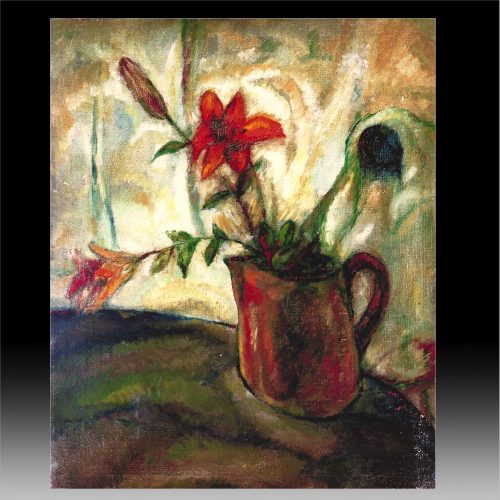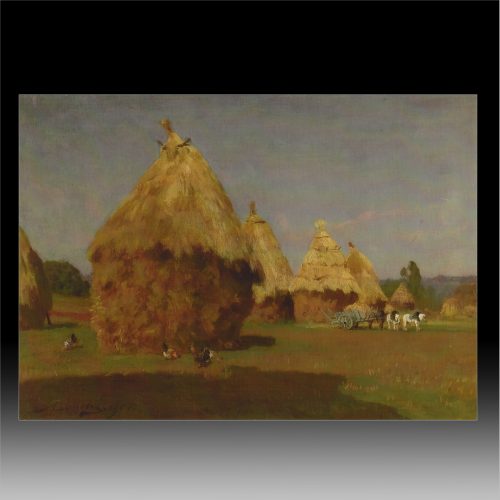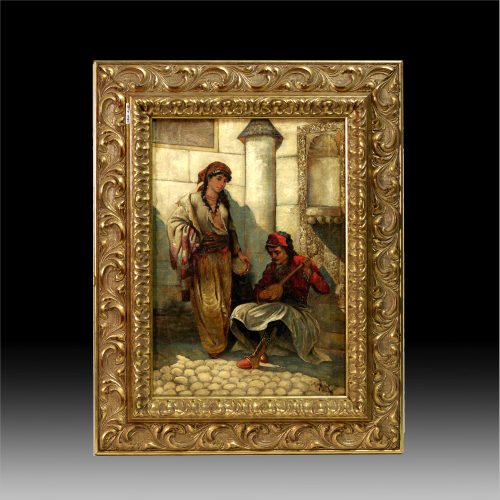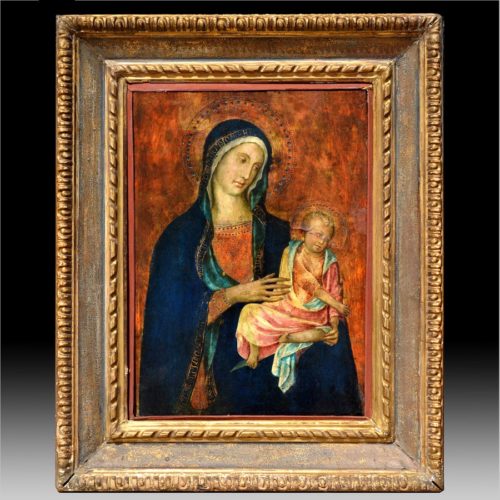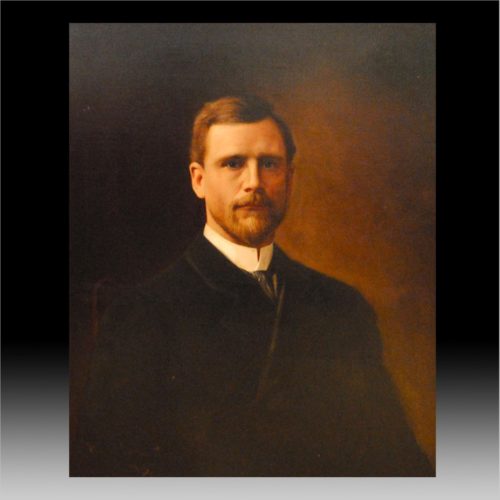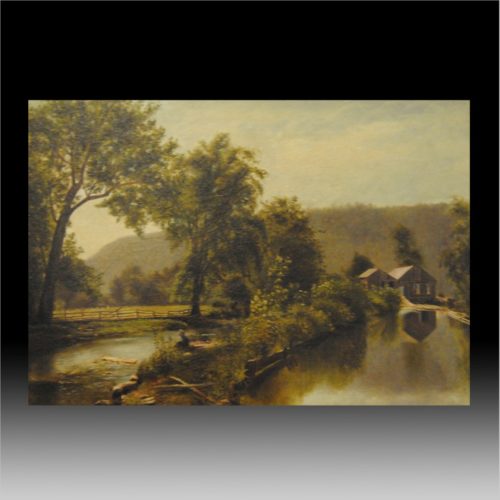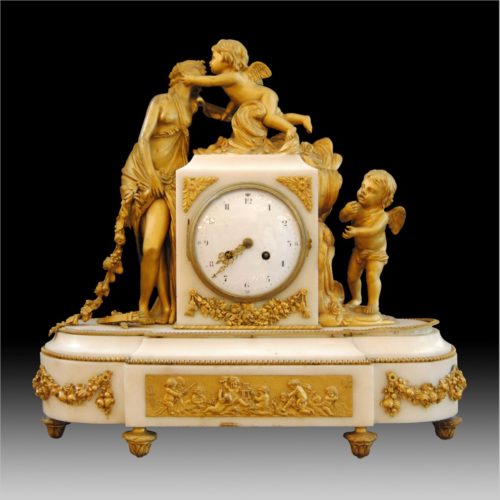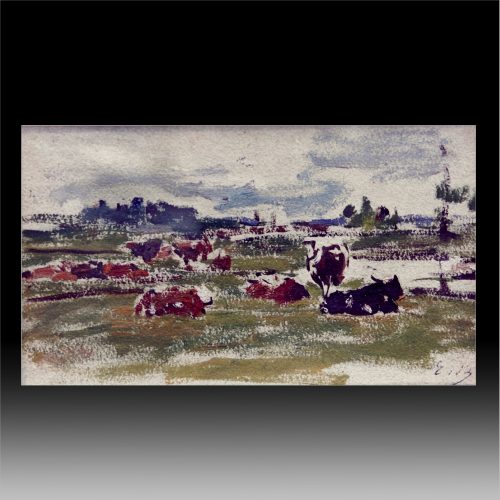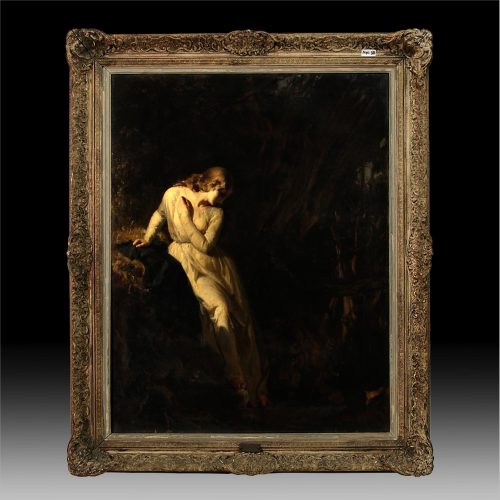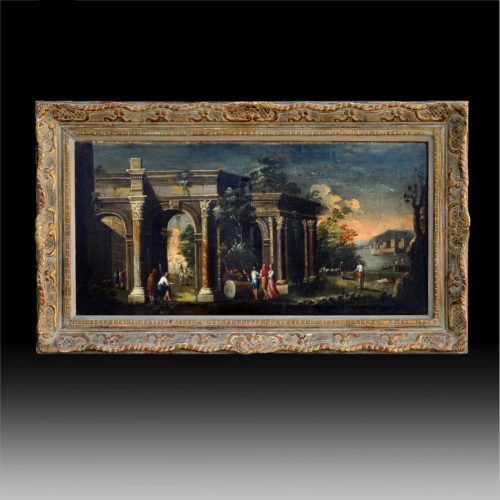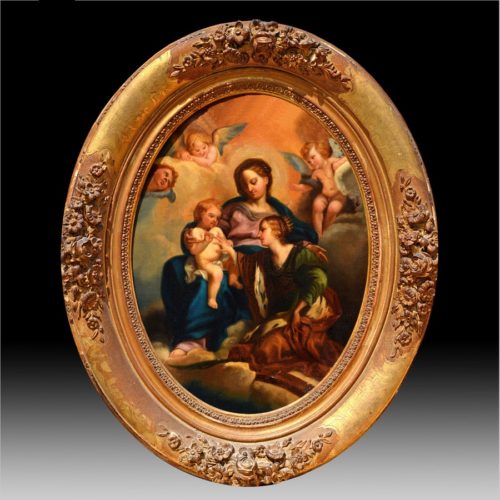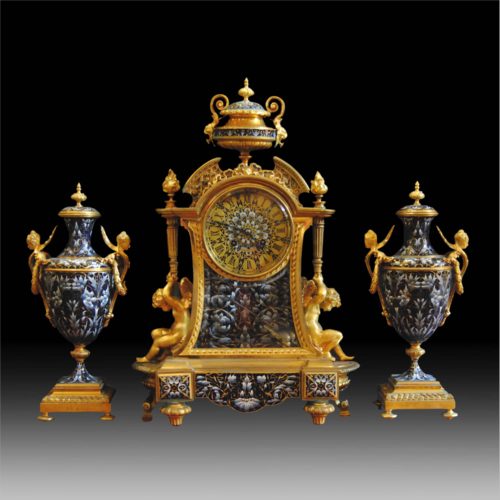View cart ““The Reading” by Gustave Wappers” has been added to your cart.
-
Yasuo Kuniyoshi
(American, 1893-1953)
"Still life with flowers"
Oil on canvas
20”x 16”
Painted in 1920
COA by B. Usui
-
Arnulf De Bouche
(German, b.1872)
Haystacks
Signed and dated ‘Abouche.1901’ lower left
Oil on canvas
13x 18 in. (33 x 45.8 cm)
-
Aleksei Mikhailovich Korin
(Russian,1865-1923)
‘Street Musicians’
oil on canvas
20½” x 14 ½”
-
Duccio di Buoninsegna (Italian, 1255-1318)
“The Madonna and Child”
Oil on panel
18 ½ x 13 inches
Duccio di Buoninsegna (Italian; c. 1255–1260 – c. 1318–1319) was an Italian painter active in Siena, Tuscany in the late 13th and early 14th centuries.
He is considered to be the father of Sienese painting and, along with a few others, the founder of Western art. He was hired throughout his life to complete many important works in government and religious buildings around Italy. Duccio is credited with creating the painting styles of Trecento and the Sienese school, and also contributed significantly to the Sienese Gothic style.
Although much is still unconfirmed about Duccio and his life, there is more documentation of him and his life than of other Italian painters of his time. It is known that he was born and died in the city of Siena, and was also mostly active in the surrounding region of Tuscany. Other details of his early life and family are as uncertain, as much else in his history. Nevertheless, his artistic talents were enough to overshadow his lack of organization as a citizen, and he became famous in his own lifetime. In the 14th century Duccio became one of the most favored and radical painters in Siena.
CL102794-10
561202-2
@NB-1040
#7
-
Walter Gilman Page
1862-1934
“Portrait of a gentlemen”
Oil on canvas
28 ½” x 36”
Signed and dated 1903 lower left
Worth 1500
@AC-NB
-
American School-
Artist: Unknown
“An Old canal”
20” x 14 ¼”
In 1870
@AC-NB
-
A Louis XVI Style Ormolu and White Marble Mantel Clock, circa 1880.
The enameled dial with twin-train movement, within a square marble case surmounted by Cupid and flanked by Venus and a cherub, above a relief-inset marble plinth and toupee feet, on a marble base.
Height: 19 inches
Width: 19 ½ inches
A pair of Louis XVI style ormolu and white marble figural six-light candelabra. Late 19th century.
Each modeled as aputto supporting a floral-garlanded vase issuing acanthus-sheathed scrolled branches, on laurel-cast base, shaped plinth and tapering foliate-cast feet, now mounted as lamps.
26 ¾ in. (67.8cm) high, excluding fitting.
CEMAR2701-100
AC15040
F-760
Candelabra:
CEMAR2701-124
AC11280
F-763
-
Eugéne Boudin
(French, 1824-1898)
“Vaches au paturage”
Oil on paper
4 ½” x 7 ¾”
Stamped with initials lower right
-
Circle of Alfred Elmore, R.A.
‘Una and The Lion’
oil on canvas.
36 x 28 in. (91.4 x 71.1 cm
-
Antonio Joli (Italian, 1700-1777)
“Figures Amongst Classical Ruins”
Oil on canvas
15 ¼ x 30 ½ inches
(38.7 x 77.5 cm)
Antonio Joli or Ioli (1700 – 29 April 1777) was an Italian painter of vedute and capricci. Born in Modena, he first was apprenticed to Rafaello Rinaldi. He then studied in Rome under Giovanni Paolo Panini, and in the studios of the Galli da Bibbiena family of scene-painters. He became a painter of stage sets in Modena and Perugia. In 1732 he moved to Venice, where he worked as stage-painter for opera productions at the Teatro di San Giovanni Grisostomo and the Teatro San Samuele of the Grimani family. In 1742 he went to Dresden, and then to London (1744–48) and Madrid (1750–54).
-
Francesco Solimena (Italian, 1657-1747)
“The Mystic Marriage of Saint Catherine”
Oil on canvas, Oval
12 7/8 x 9 5/8 inches
(31.8 x 24.7 cm)
CL102794-97
430602-2
@NB-1040
#61
-
A Champlevé & Gilt-Bronze Clock Garniture (Set of 3 Pieces).
Paris, circa 1880.
The clock with Roman numeral dial above a glazed panel enclosing a stylized dark and light blue and white enamel foliate design, surmounted by a covered urn and flanked by putti upholding torches, on a shaped rectangular base and toupee feet. The clock dial is signed, E. Henry Paris; flanked by a pair of covered urn of ovoid form with handles in the form of Elizabethan maiden’s heads, on square bases and disc feet, the movement stamped 24568, striking on a bell.
Clock Height: 18 ½ inches
Vase Height (2): 11 inches
SSP2999-353
AC43989
F-376

